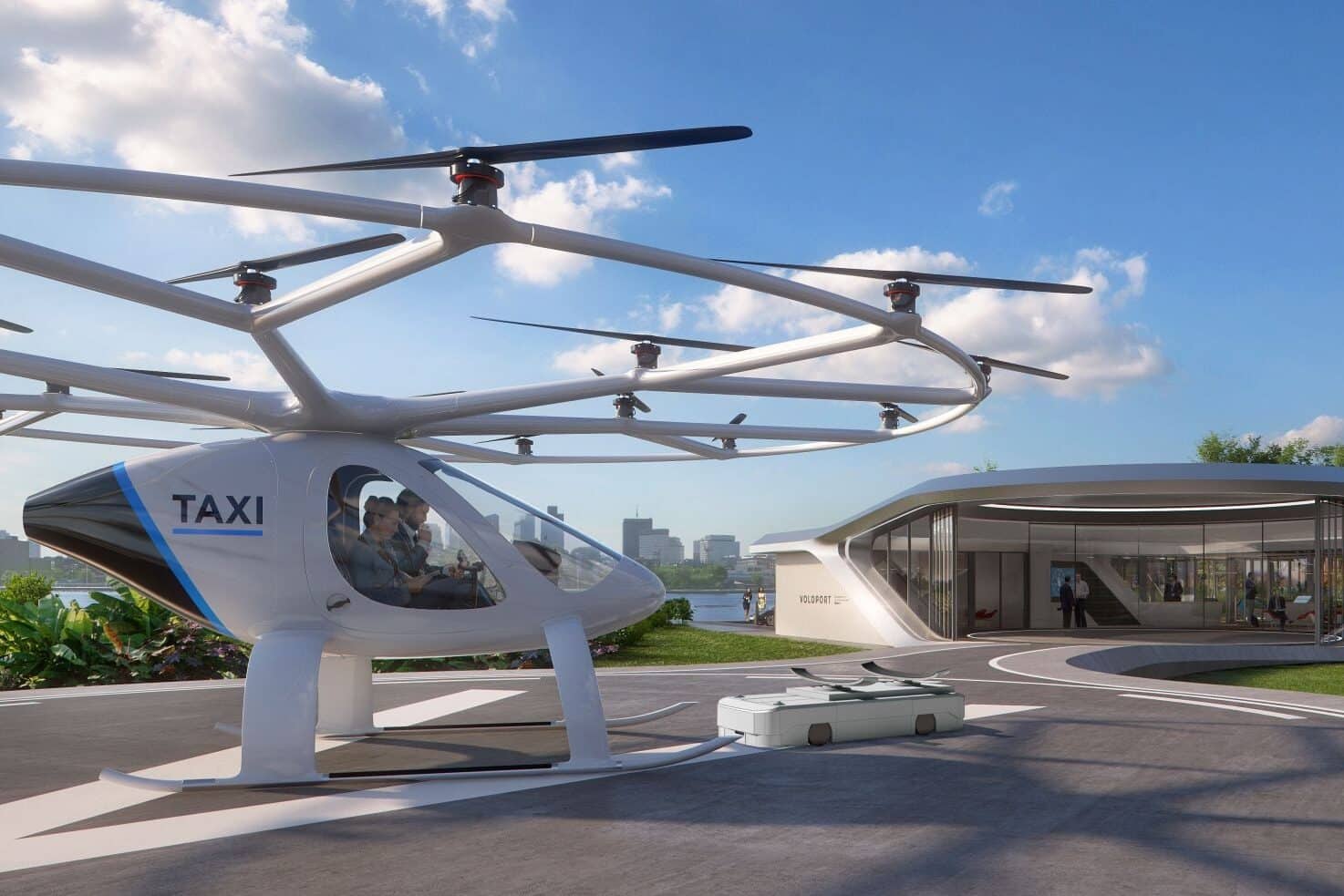Aerospace
By 2026, Dubai hopes to have a fully functioning flying taxi service.

By constructing a fully operating flying taxi network by 2026, Dubai aspires to be the city that leads the future of flying taxis.
According to the Khaleej Times, an English-language newspaper based in the United Arab Emirates, the CEO of Skyports, which builds landing infrastructure for these aerial taxis, said Wednesday that he believed the city would be the first in the world to integrate a “fully-developed network” of flying taxis into its public transportation network.
EASA proposes rules for VTOL operations, including air taxis(Opens in a new browser tab)
According to a news release on its website, Skyports originally announced plans to develop the vertiports – launching pads for these airborne taxis — in February. There are plans to build four landing sites near Dubai International Airport, Palm Jumeirah, Dubai Downtown, and Dubai Marina.
Four vertiport sites located near Dubai International Airport, Palm Jumeirah, Dubai Downtown, and Dubai Marina, which are currently being considered by Skyports Infrastructure and RTA, were presented to a senior delegation which included His Highness Sheikh Mohammed bin Rashid Al Maktoum, accompanied by Crown Prince Sheikh Hamdan bin Mohammed bin Rashid Al Maktoum. These initial locations will connect four of Dubai’s most popular – and populous – areas, providing high-speed, zero-emissions connectivity.
The Lilium : World’s first all-electric flying taxi.(Opens in a new browser tab)
The air mobility exposition demonstrates the RTA and Skyports Infrastructure’s planned roadmap for developing a vertiport network in Dubai for launch by 2026, including a concept for how future vertiport infrastructure may look and how it will integrate with existing transportation, including the RTA’s Dubai Metro network and Dubai International Airport.
Ahmed Bahrozyan, Chief Executive Officer of The Public Transport Agency at RTA, said, “The RTA’s plan for aerial taxis is in line with the Dubai Self-Driving Transport Strategy, which aims to make 25 percent of all trips in Dubai driverless by 2030. The project aims to roll out a new mobility service driven by pioneering technology to ease the mobility of individuals across urban areas in a safe, smooth, and sustainable manner integrated with the public transport network in Dubai. The service is set to be operational by 2026.

Aerospace
Boeing Transfers Rocket Stage to NASA, Paving Way for Human Moon Mission

Boeing has achieved a significant milestone by providing NASA with the second core stage of the Space Launch System (SLS) rocket.
This crucial component, crafted at NASA’s Michoud Assembly Facility (MAF), is set to propel the Artemis II crew into lunar orbit, marking humanity’s return to deep space after a 50-year hiatus.
The monumental Boeing-built rocket stage, the largest element of the Artemis II mission, will embark on a journey aboard the Pegasus barge, traveling 900 miles to NASA’s Kennedy Space Center.
Comparison of two legendary aircraft B777x vs B747 aircraft:Click here
Upon arrival, it will be meticulously integrated with other essential Artemis II components, including the upper stage, solid rocket boosters, and NASA’s Orion spacecraft within the iconic Vehicle Assembly Building. This intricate integration process is a vital step toward the eagerly anticipated Artemis II launch, slated for 2025.
“Boeing-built products helped land humankind on the moon in 1969, and we’re proud to continue that legacy through the Artemis generation,” remarked Dave Dutcher, vice president and program manager for Boeing’s SLS program. “Together, with NASA and our industry partners and suppliers, we are building the world’s most capable rocket and paving the way to deep space through America’s rocket factory in New Orleans.”
NASA, Lockheed Martin Reveal X-59 Quiet Supersonic Aircraft:Click here
The delivery of Core Stage 2 marks a significant achievement in the evolution of the SLS rocket. Towering over 200 feet and powered by four RS-25 engines, this core stage, coupled with two solid-fueled booster rockets, will generate a staggering 8.8 million pounds of thrust. This immense power is crucial to launching Artemis II and future missions into the vast expanse of space.
The SLS rocket stands unparalleled in its capability to transport both crew and substantial cargo to the moon and beyond in a single launch. Its extraordinary capacity will facilitate the delivery of human-rated spacecraft, habitats, and scientific missions to destinations including the moon and Mars, ushering in a new era of space exploration.
-

 Travel1 week ago
Travel1 week agoAir India to Expand US Operations with Three New Routes After a Decade
-

 Travel2 weeks ago
Travel2 weeks agoWhy We Should Avoid These Stamps in a Passport
-

 Airlines1 month ago
Airlines1 month agoInvestigations Reveal Fake Chinese Titanium in Boeing and Airbus Jets
-

 Tech4 weeks ago
Tech4 weeks agoChina’s CATL Plans 1,800-Mile Electric Plane Launch by 2027
-

 Airport3 days ago
Airport3 days agoTop 10 Largest Airports in the World by Size
-

 Aerospace4 weeks ago
Aerospace4 weeks agoChina’s Fighter Jets Turn Wings into Autonomous Drones
-

 Airlines4 days ago
Airlines4 days agoAir India Rolls Out A350s for Delhi-New York JFK and Newark Routes
-

 Defence3 weeks ago
Defence3 weeks agoBoeing Enhances Chinook with New Engines and Block II Upgrades at $96 Million







